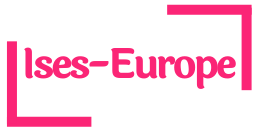Red light therapy (RLT) has emerged as a compelling subject within the scientific community, attracting attention for its potential application in various fields, including medicine, wellness, and aesthetics. Utilizing low wavelength red light, this non-invasive treatment is believed to stimulate cellular processes and promote healing by enhancing mitochondrial function, improving circulation, and reducing inflammation. As researchers continue to explore its myriad benefits, RLT has gained popularity among patients and practitioners alike, yet a clear understanding of its underlying mechanisms and efficacy is crucial for discerning its role in contemporary healthcare.
This article delves into the scientific underpinnings of red light therapy, examining the latest research findings, clinical applications, and the biological processes activated by exposure to red light. By navigating through the evidence and exploring both the advantages and limitations of this innovative therapy, we aim to shed light on whether red light therapy is a groundbreaking treatment option or merely a trend within the realm of alternative therapies. Understanding its mechanisms will not only illuminate its potential benefits but also provide clarity for those considering its use in their health and wellness journeys.
Mechanisms of Action
Red light therapy operates primarily through the absorption of light by mitochondrial chromophores, leading to an increase in adenosine triphosphate (ATP) production. This process not only enhances cellular energy but also stimulates various biological pathways that promote cell regeneration and repair. Through improved mitochondrial function, RLT may effectively mitigate oxidative stress, a contributor to numerous health conditions. The therapy is reported to facilitate healing by increasing blood flow and promoting collagen synthesis, which can aid in tissue repair and reduce scarring. As such, understanding these mechanisms will provide invaluable insights into how RLT could serve as a complementary approach to traditional medical treatments.
Clinical Applications
The versatility of red light therapy has sparked interest across several clinical domains, ranging from dermatology to pain management. Research has indicated potential applications in treating skin conditions such as acne, psoriasis, and even signs of aging. Additionally, its analgesic properties have made it a candidate for managing chronic pain conditions, including arthritis and fibromyalgia. To substantiate these claims, it’s essential to evaluate the red light therapy scientific evidence that underscores its efficacy and safety across different patient populations. While the promising outcomes suggest a bright future for RLT, ongoing research and clinical trials are necessary to establish standardized protocols for its use and confirm its therapeutic potential.
As the body of research surrounding red light therapy continues to expand, its scientific validation remains imperative for its integration into mainstream healthcare practices. Emerging studies consistently highlight the treatment’s ability to enhance healing processes, alleviate pain, and improve skin health, yet the variability in methodologies and outcomes necessitates cautious interpretation. To fully harness the benefits of RLT, future investigations must focus on establishing standardized treatment protocols, optimizing dosage parameters, and identifying specific patient populations that may experience the most significant advantages. By bridging the gap between anecdotal evidence and rigorous scientific inquiry, red light therapy may realize its potential not only as an adjunctive treatment option but also as a legitimate modality within holistic healthcare frameworks. Ultimately, a thorough understanding of the clinical implications and mechanisms of action will empower patients and healthcare providers alike to make informed decisions about this innovative therapeutic approach.
